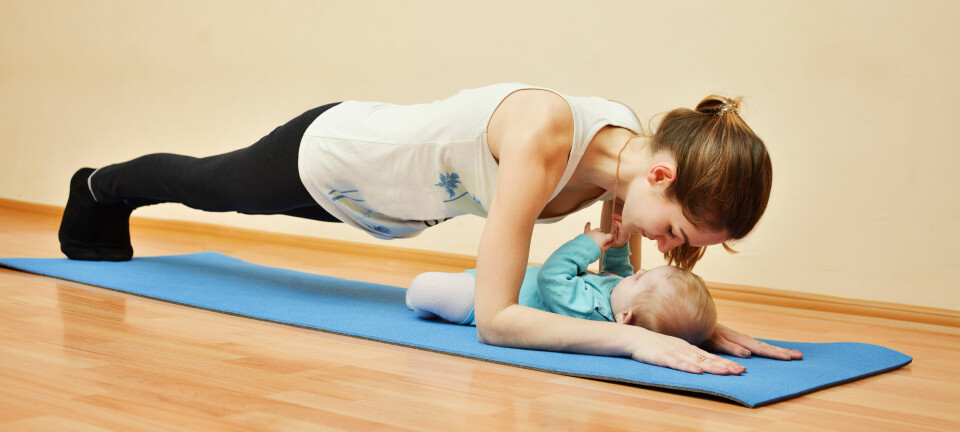Tai Chi training is effective in reducing balance impairments and falls in patients with Parkinson’s disease
Blikk på forskning i Fysioterapeuten 8/2013.
Blikk på forskning utarbeides i samarbeid med Journal of Physiotherapy (Australia), som trykker forskningspresentasjonene under betegnelsen Critically appraised Papers, CAPs.
Synopsis
Summary of: Li F, et al (2012) Tai Chi and postural stability in patients with Parkinson’s disease.New Eng J Med366:511–519. [Prepared by Marco YC Pang, CAP Editor.]
Question: Does Tai Chi improve postural control in patients with Parkinson’s disease?
Design: Randomised, controlled trial and blinded outcome assessment.
Setting: University clinic in USA.
Participants: Individuals with Parkinson’s disease (Hoehn and Yahr Stage 1–4) between the age of 40 and 85 years, and ability to walk with or without an assistive device were key inclusion criteria. Mini-Mental State examination score < 24 and concurrent participation in other instructor-led exercise programs were key exclusion criteria. Randomisation of 195 participants allocated 65 to each of the Tai Chi, resistance, and stretching groups.
Interventions: The Tai Chi group underwent a Tai Chi program, the resistance group 8 to 10 leg muscle strengthening exercises, while the stretching group performed stretching exercises involving the upper body and lower extremities. All three groups trained for 24 weeks (60 minutes per session, two sessions per week).
Outcome measures: The primary outcomes were two indicators of postural stability – maximum excursion and directional control derived from dynamic posturography. The secondary outcomes were stride length, gait velocity, knee flexion and extension peak torque, functional reach, timed-up-and-go test, and motor section of the Unified Parkinson’s Disease Rating Scale (UPDRS III). The outcomes were measured at baseline, at 12 and 24 weeks, and three months after termination of the intervention.
Results: 185 participants completed the study. At the end of the 24-week training period, the change in maximum excursion in the Tai Chi group was significantly more than that in the resistance group (by 5%, 95% CI 1.1 to 10.0) and the stretching group (by 12%, 95% CI 7.2 to 16.7). Direction control improved significantly more in the Tai Chi group compared with the resistance group (by 11%, 95% CI 3.9 to 17.0) and the control group (by 11%, 95% CI 5.5 to 17.3). The Tai Chi group also had significantly more improvement in stride length and functional reach than the other two groups. The change in knee flexion and extension peak torque, timed-up-and-go test, and UPDRS III score in the Tai Chi group was only significantly more than that in the stretching group, but not the resistance group. The falls incidence was also lower in the Tai Chi group than the stretching group during the 6-month training period (incidence-rate ratio: 0.33, 95% CI 0.16 to 0.71).
Conclusion: Tai Chi training is effective in reducing balance impairments in patients with mild to moderate Parkinson’s disease.
Commentary
Li et al report a well-conducted randomised clinical trial using Tai Chi as an intervention among patients with Parkinson’s disease. The Li study builds on previous research which has shown that limits of stability are better in community-dwelling older Tai Chi practitioners in both maximum excursion and directional control (Tsang and Hui-Chan 2003, Gyllensten et al 2010). The findings reflect the training specificity of Tai Chi in which the practitioners are required to shift their body weight to different positions as far as possible in a smooth and co-ordinated manner, whereas the other two exercise groups (resistance training group and stretching group) did not have such features. This is also the first study investigating whether Tai Chi has any positive impact on fall incidence in patients with Parkinson’s disease. Recurrent fallers in patients with Parkinson’s disease demonstrate poorer functional leg muscle strength than non-fallers (Mak and Pang 2010). Improving muscle strength may thus be an important intervention strategy in reducing falls. The study showed that the fall incidence in the Tai Chi group was lower than in the stretching group, but was similar to the resistance training group. Although improvement in postural control may explain the reduction in fall rate, the muscle strengthening effect of Tai Chi may also contribute, as the Tai Chi training induced gain in knee muscle strength that is comparable to resistance exercise training. In this study, all patients with a Mini-Mental State examination score < 24 were excluded, but a proportion of patients with Parkinson’s disease suffer from mild cognitive impairment and dementia. Tai Chi is a mind-body exercise and the practice of Tai Chi may enhance cognition and dual-task performance (Tsang et al 2012). Future study should address the effect of Tai Chi on these important outcomes, and their relationships with fall incidence in patients with Parkinson’s disease, including those with cognitive impairment.
William WN Tsang, Department of Rehabilitation Sciences, The Hong Kong Polytechnic University, Hong Kong, China.
References
Gyllensten AL et al (2010) Arch Phys Med Rehabil 91: 215–220.
Mak M, Pang MYC (2010) J Neurol 257: 1543–1551.
Tsang WWN, Hui-Chan CWY (2003) Med Sci Sports Exerc 35:1962–1971.
Tsang WWN et al (2012) Eur J Appl Physiol 112: 2663–2669.
























